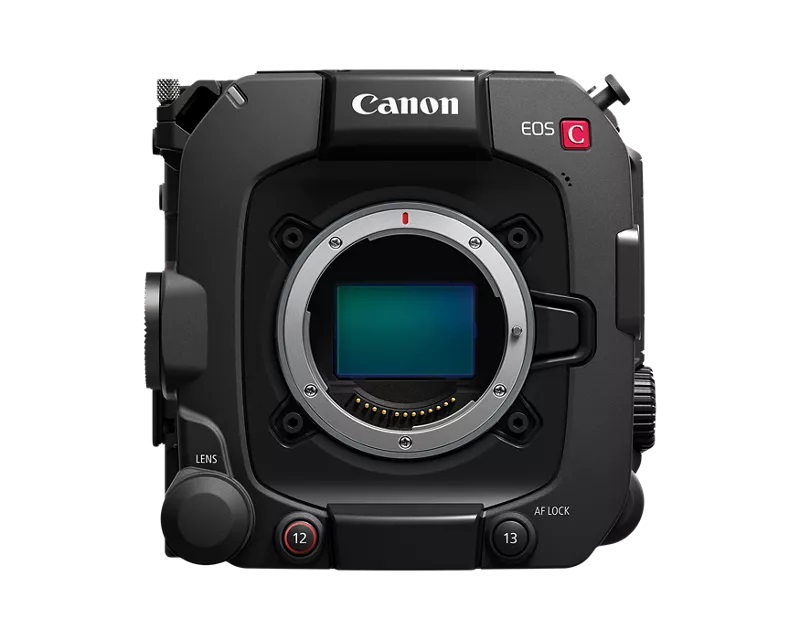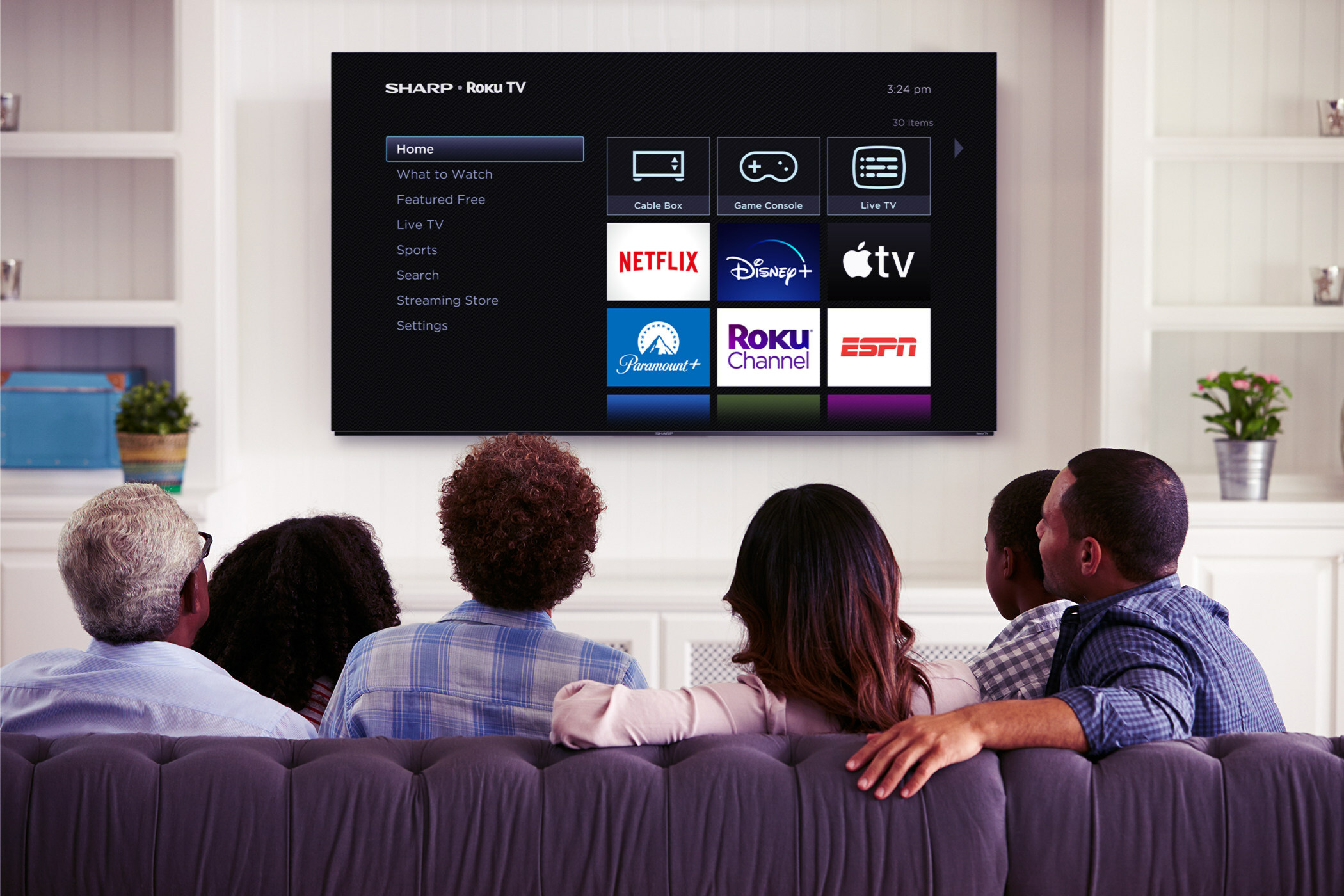Canon Announces New EOS C400 6K Full-Frame RF Mount Cinema Camera
It also unveiled a new RF-Mount CINE-SERVO Lens and announced firmware updates with enhanced features for Cinema EOS Cameras and Pro Camcorders

MELVILLE, N.Y.—Canon U.S.A. Inc. has made several new product announcements with the unveiling of the new Canon EOS C400 cinema camera, a new RF-Mount CINE-SERVO and firmware updates with enhanced features for Cinema EOS Cameras and Pro Camcorders.
The Canon EOS C400 cinema camera features a native RF-mount and full-frame, back-illuminated stacked CMOS sensor and is designed with the film and live production markets in mind.
Canon is announced the company’s first MOUNT ADAPTER PL-RF, and an RF-mount version of the popular and award-winning CINE-SERVO 17-120mm cinema lens.
In addition, the company announced a variety of firmware updates for key models in its Cinema EOS and professional camcorder line of cameras, including the EOS C500 Mark II, EOS C300 Mark III, EOS C70, EOS R5 C cameras and the XA75/70, XA65/60 and VIXIA HF G70 camcorders.
“Canon is proud to provide filmmakers and videographers with a variety of tools to capture high-quality and visually stunning images,” said Brian Mahar, senior vice president and general manager, Canon U.S.A., Inc. “The new camera and lens strengthen Canon’s already impressive lineup of cinema products.”
For the first time in the cinema EOS system, the Canon EOS C400 camera features a newly developed 6K full-frame, back-illuminated CMOS sensor, with triple-base ISO, allowing the camera to deliver stunning imagery in a wide range of lighting conditions. The base ISOs of 800, 3200, and 12,800 maximize the full dynamic range of the camera.
An additional benefit of the EOS C400 camera’s sensor is the support for the next generation of Canon’s Dual Pixel CMOS Autofocus, Dual Pixel AF II. The back-illuminated stacked positioning offers better light-capturing efficiency, which widens the area of the sensor that can be used for autofocusing. The sensor also empowers faster readout speed, as well as better 4K image quality from 6K oversampling.
Get the TV Tech Newsletter
The professional video industry's #1 source for news, trends and product and tech information. Sign up below.
The EOS C400 camera records in 6K full-frame up to 60p in 12-bit Cinema RAW Light. By changing the sensor mode, the camera can record 4K RAW up to 120fps and 2K RAW up to 180fps. This is all recorded in Canon’s latest iteration of Cinema RAW Light, which provides three different recording modes to choose from depending on your file size preference and workflow.
Other recording options include the Canon-developed, industry standard XF-AVC codec which can be recorded in 10-bit 4:2:2 with oversampling from the 6K sensor, helping to create rich detail and smooth imagery, at frame rates up to 120P, without the need for cropping the image from the sensor. Canon is also introducing two new recording codecs into the EOS C400 camera, XF-AVC S and XF-HEVC S. These formats feature an easy-to-manage naming system and folder structure, while recording in the familiar MP4 format and preserving metadata.
All of these options are recorded to the camera’s CFexpress slot with sub-recording and proxy options available to the SD Card slot, which allows for simultaneous recording even when shooting RAW.
For live productions, the EOS C400 camera body features a dedicated 12-pin lens terminal for broadcast and cine-servo lenses, a variety of output and input interfaces including mini-XLR audio inputs, DIN connectors for time code, genlock and return video, 12G-SDI and 3G-SDI monitor outputs, a full-size HDMI output, built-in Wi-Fi connectivity, Ethernet and much more. The camera also features SRT protocol for IP streaming of video and audio. For shooting scenarios where the camera will be controlled remotely, you can use the Ethernet port or Wi-Fi connectivity to enable remote control, including support for the Canon Multi-Camera Control app, browser remotes, or the Canon RC-IP100 or RC-IP1000 controllers via use of the included XC protocol, the company reported.
The EOS C400 camera can also provide frame-by-frame metadata in real-time and post-production to support virtual production workflows. Ready for 180-degree VR shooting, the EOS C400 camera has built-in compatibility with the Canon RF5.2mm F2.8 L dual fisheye lens.
In terms of the new CINE-SERVO 17-120mm Cinema Lens, the company said that it builds upon the legacy of the company’s CINE-SERVO line, with the added benefit of a native RF mount. The additional pins of the RF mount increase communication with RF-mount cameras such as the EOS C400, enabling auto focus, distortion correction and metadata output for virtual productions. The lens comes in either RF or PL mount configurations, with the PL mount version supporting ZEISS eXtended Data and ARIA (Automatic Restoration of Illumination Attenuation).
The lens’ new e-Xs V servo drive unit helps to improve its focus and iris speed, enables focus breathing compensation, and includes a USB-C connector for copying drive unit configurations.
In addition, Canon is also introducing the newly developed MOUNT ADAPTER PL-RF. This adapter opens up a broad range of PL mount lenses to the EOS C400 camera. The adapter maintains compatibility for Cooke i/Technology metadata communication between camera and lens and includes locking plates to help achieve maximum mount strength. To learn more about these new products and Canon’s array of cinema solutions, please visit here.
Canon said that the Canon Cinema EOS C400 Full-Frame RF Mount Camera is scheduled to be available in September 2024 for an estimated retail price of $7,999.00. The CINE-SERVO 17-120mm will be available in October 2024 for an estimated retail price of $23,850.00. The MOUNT ADAPTER PL-RF will be available in September 2024 for an estimated retail price of $1,599.00.
More information, including accessory prices and availability, is available here.
In terms of the firmware updates, Canon said they will be available through a free download at the end of June 2024.
Highlights for each of the Canon products include:
- EOS C500 Mark II/ EOS C300 Mark III Cameras. “Sensor Mode” will be saved to an assignable button on the camera body to quickly change between Full-frame, Super 35mm and Super 16mm crop modes. The Focus Guide box will have two size options: Standard and Large (approximately two times larger than standard). Camera LCD screen will display a playback marker in Media Mode.
- For the EOS C300 Mark III camera: Cinema RAW Light HQ/ST/LT recording modes will be added. Auto ISO/Gain functions that can be operated from the camera menu, an assignable button, or with a compatible remote-control unit will be added.
- EOS C70/EOS R5 C Cameras: Same Focus Guide and playback marker enhancements as the C500 Mark II and C300 Mark III cameras will be added. Option of assigning functions to the select dial on the back of the camera, including AF subject selection, shutter, iris, ISO/gain, and white balance mode will be added.
- For the EOS R5 C camera, the following will be added: Ability to adjust the thickness of the AF frame, making it easier to see in certain lighting conditions. Ability to reset the AF position by pushing the joystick or set buttons. When shooting RAW VR content with Canon’s dual fisheye lens, you will be able to record both the peripheral illumination and chromatic aberration data. This will help with processing footage into smoother and even more amazing VR content than before the firmware update. New features from the March 2024 R5 firmware update.
- XA75/70 and XA65/60 Camcorders: Option to view the date and time in the on-screen display (OSD) while recording will be added. White balance will be able to be changed while recording.
To download the firmware updates once available, or for more information regarding the firmware updates and all of Canon’s professional video products and solutions, please visit usa.canon.com.
George Winslow is the senior content producer for TV Tech. He has written about the television, media and technology industries for nearly 30 years for such publications as Broadcasting & Cable, Multichannel News and TV Tech. Over the years, he has edited a number of magazines, including Multichannel News International and World Screen, and moderated panels at such major industry events as NAB and MIP TV. He has published two books and dozens of encyclopedia articles on such subjects as the media, New York City history and economics.

